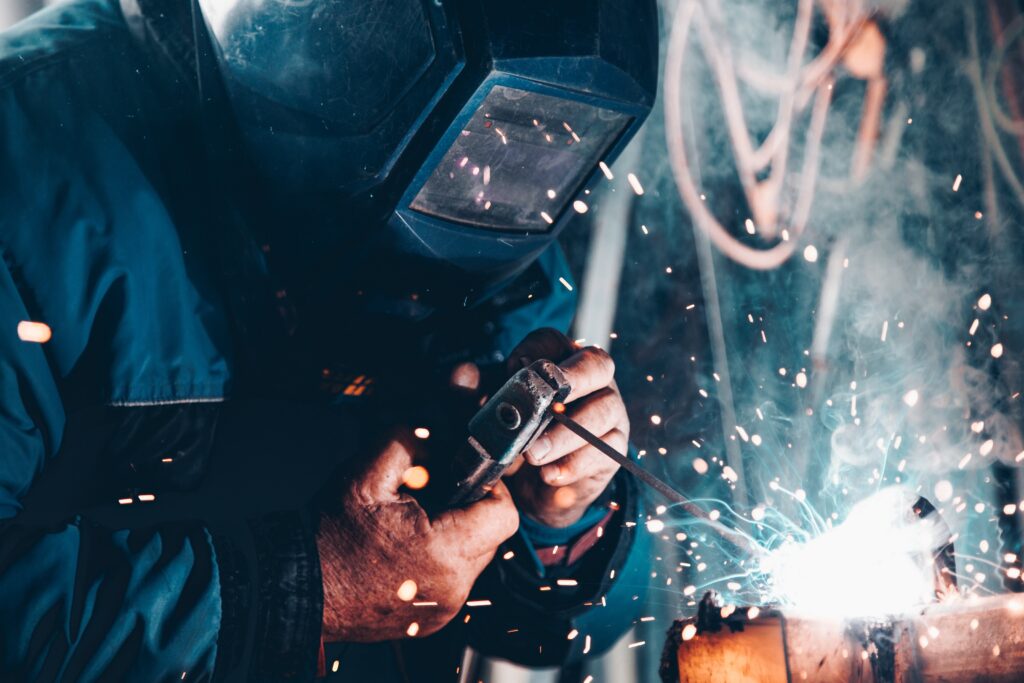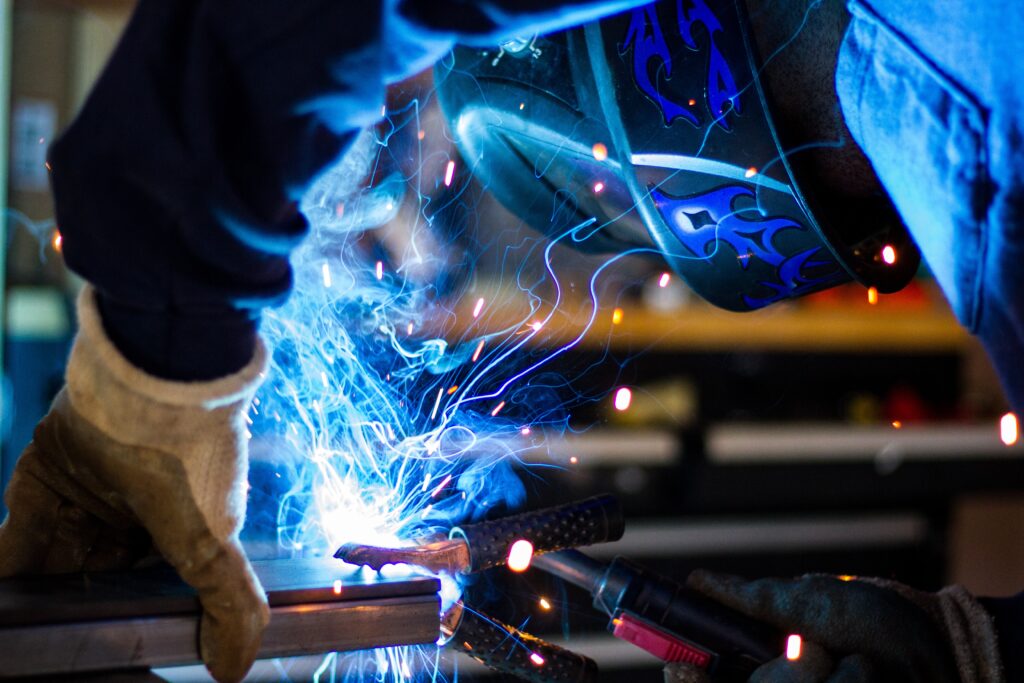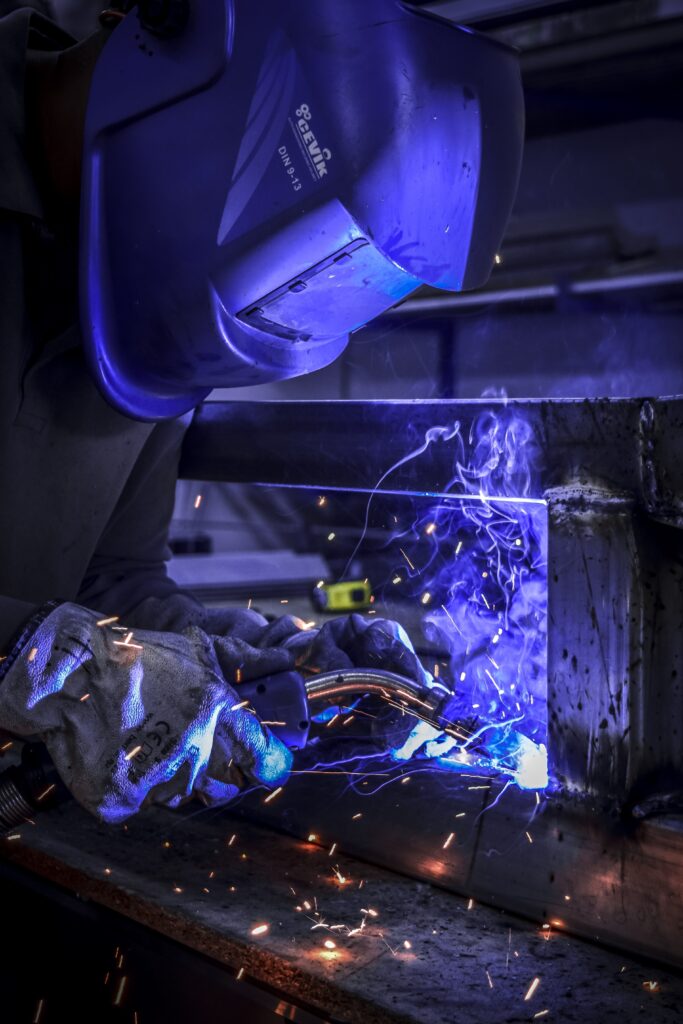You’ve often wondered about the world of welding, and now it’s time to explore the upsides and downsides of this industrial art. In this enlightening article on “What Are The Pros And Cons Of Welding?”, you’ll discover the nuances of this invaluable skill. From the satisfying sparks of a perfect weld to the challenges faced by the craftsmen, prepare yourself for a fascinating journey into the realm of metalwork. Your discovery starts here, unmasking the intricate dance of fire and steel that is welding.

Understanding Welding
Welding is a fascinating field that often gets overlooked despite its importance in our everyday lives. It is fundamental in various sectors including construction, manufacturing, and automotive. But what exactly is welding?
Definition of Welding
Welding, at its simplest form, is the process of joining two or more pieces of metal together. This is typically achieved by applying extreme heat to melt the materials, then allowing them to cool, causing them to fuse. There’s more to it than just a spark and a steady hand, it requires skill, precision, and a deep understanding of various welding techniques to do the job correctly.
Different Types of Welding
There are different types of welding processes – from MIG (Metal Inert Gas) welding, TIG (Tungsten Inert Gas) welding, to stick welding, and more, each with its own unique benefits and drawbacks. The selection of the welding process usually depends on your specific project needs concerning the type of material, strength requirements, and cost.
The Welding Process
The welding process involves several stages. Firstly, preparing the materials to ensure they are clean and cut to the right size. Secondly, the actual welding where heat is applied to the material. Filler material is often used to ensure a strong bond. Lastly, cleaning the weld to remove any remnants of slag or other waste material.
Various Applications of Welding
Applications of welding are endless. From constructing buildings and bridges to the production of cars and airplanes, welding is vital. It can also be used in smaller scale projects like creating customized furniture or arts and crafts projects.
Advantages of Welding
High Strength
One of the main benefits of welding is the strength and durability it provides. Properly welded joints are often stronger than the individual pieces of metal they join.
Cost-Effective
Welding, particularly automated welding, can be cost-effective. It speeds up production and reduces the amount of waste, saving both time and resources.
Versatility
The versatility of welding is also a significant advantage. Different types of welding techniques can be used on a variety of materials, making it adaptable for various projects.
Access to Various Job Opportunities
There is a broad range of industries that require skilled welders, from maritime to manufacturing and construction, hence offering a plethora of job opportunities.
Welding and Fabrication Advancements
With technological advancements, the face of welding has significantly changed in the past years. New techniques and equipment have made the processes easier, safer, and quicker.

Disadvantages of Welding
Health and Safety Risks
Welding doesn’t come without its risks. Welders are exposed to extreme heat and potentially harmful gases and fumes.
Requires Special Skills
Welding requires a certain level of proficiency and training. It’s not a simple DIY job. Each type of welding technique demands a unique skill set.
Welding Equipment Maintenance
Like any industrial equipment, regular maintenance is necessary for welding machines to increase their life span and maintain efficiency.
Potential for High Initial Start-Up Costs
The initial cost for the welding equipment can be high, particularly for more sophisticated systems.
Limitations in terms of Material Compatibility
Not all metals are compatible with every welding technique, which could limit the application of certain processes.
Health Risks in Welding
Exposure to Toxic Gases and Fumes
Welders are often exposed to toxic gases and fumes. Without proper safety measures in place, this can lead to serious health issues.
Welding Flash Dangers
The intense light produced during welding, known as a welding flash, can cause severe eye damage if the proper safety equipment isn’t used.
Risk of Burns and Injuries
Due to the high temperatures produced during welding, there is a risk of burns and other injuries.
Long Term Health Threats
Some long-term health threats associated with welding include damage to the lungs and respiratory system, and in some cases, cancer.

Safety Measures for Welders
Protective Gears and Clothing
Use of protective clothing such as gloves, welding jackets, and safety glasses can help stay safe during welding.
Proper Ventilation
It’s important to work in a well-ventilated area to reduce the inhalation of harmful gases and fumes.
Strict Adherence to Safety Protocols
Workplace safety regulations should be strictly adhered to in order to prevent accidents.
Proper Handling of Welding Tools
Welding tools must be handled with care and well maintained to ensure safety and increase their lifespan.
Skill and Characteristics of a Good Welder
Attention to Detail
To produce quality work, it’s important for a welder to pay attention to detail. This ensures that welds are solid, clean and polished.
Proper Training and Experience
Experience and training play a vital role in determining the success of a welder. The more experience, the better the quality of work.
Precision and Coordination
A good welder needs to have precision and excellent hand-eye coordination. welding is a meticulous task, and one small mistake can have big consequences.
Understanding of Blueprints
An undeniably important skill for a welder is being able to read and interpret blueprints. This aids in preventing mistakes during the fabrication process.
Physical Strength
Since welding often involves lifting heavy materials and working for long hours, physical strength is important.
Economic Impact of Welding
Job Market for Welders
As mentioned earlier, there’s a high demand for professional welders in various sectors, which makes it a promising job market.
Income Potential for Welders
The income potential for welders can be quite attractive, especially for those with special skills or in certain industries.
Economic Significance of Welding in Manufacturing Industries
Welding plays an essential role in industries such as automotive, aerospace, construction, and many others. This implies it has a significant impact on the economy.
The Future of Welding in the Economy
With technological advancements and new welding techniques in the works, the future of the welding industry looks bright.
Environmental Implications of Welding
Greenhouse Gas Emissions
Some welding processes release greenhouse gases like CO2 which contribute to global warming.
Waste Generation
Similar to other manufacturing processes, welding also generates waste which needs to be managed effectively.
Noise Pollution
Welding equipment can be loud, contributing to noise pollution in the environment.
Effective Waste Management for Welding
There are practices that can be implemented to reduce waste generated during welding, such as metal recycling and using new technologies that produce fewer emissions.
Impact of Technological Advancements on Welding
Robot Welding
Robot welding has brought many improvements to the industry. Robots can work faster, more accurately, and they don’t get tired.
Laser Welding
Laser welding allows for precise welding in small areas, or very deep welds.
Use of AI in Welding
Artificial Intelligence is being used to improve the quality of welds, predict potential issues, and increase overall productivity.
Virtual Reality in Welding Training
Virtual Reality allows for safer and more efficient training of welders, without the need for physical materials.
The Future of Welding
Emerging Welding Technologies
As technology continues to evolve, so will the field of welding. Methods such as Friction Stir Welding and Electron Beam Welding show potential.
Challenges and Opportunities for Welding in the Future
Despite the challenges, the future holds many opportunities for the welding industry, especially with the technological advancements taking place.
Predictions for the Welding Industry
It is predicted that the welding industry will continue to grow with an increased demand for skilled workers. New technologies and tools will further shape the field in the near and long-term future.
